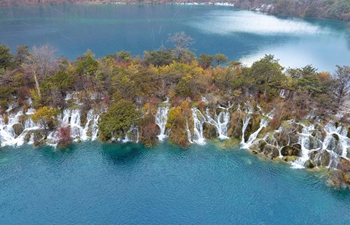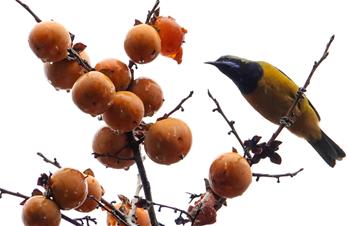JAKARTA, Nov. 8 (Xinhua) -- The world's earliest-known figurative painting of an animal has been discovered in a cave of Borneo, Indonesia, according to a new study published on the Nature magazine.
The reddish-orange artwork, which is about 5 feet (1.5 meters) wide and dates back to at least 40,000 years ago, depicts an animal that is not readily identifiable. The team of archaeologists from Australia and Indonesia who did the research say it might be a banteng, a type of wild cow that lives in the area today.
The animal appears to have a spear shaft protruding from its flank. Uranium-series analysis of calcium carbonate deposits that overlie the painting have been conducted to track its date.
In addition to the animal drawing, researchers have also found reddish-orange-colored hand stencils from the same site, one of which may date back to as old as 51,800 years ago. Hand stencils are created by placing one's hand on a wall and covering it with pigment, which results in a negative rendition.
"This is a very large area with many paintings and many caves -- it's a major archaeological discovery," said Francesco d'Errico, a paleontologist from the University of Bordeaux in France, according to the BBC.
Man-made images of an older age have been found elsewhere but are abstract patterns. Earlier, archaeologists identified nine red lines on a stone flake in a South African cave which they believed are about 73,000 years old.
The switch from abstract art to figurative art marked a significant shift in how people thought about the world in human history, experts said.













